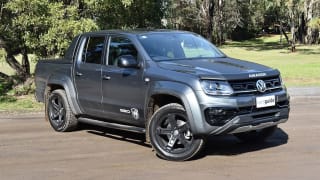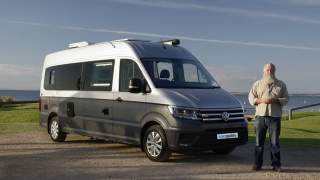Our Bright White test vehicle, with optional body-coloured wheel arch flares, is available only with a 3.6-litre V6 petrol engine and eight-speed automatic transmission for a list price of $82,450 plus ORCs. That pricing isn’t far south of the Next-Gen Ranger Raptor.
Our example is also fitted with a pair of Jeep genuine accessory roof racks plus options from the Lifestyle Adventure Group including heavy-duty electrics, lockable rear under-seat storage, spray-in bedliner and adjustable load anchorage system.
With prominent Rubicon bonnet decals, this uncompromising off-roader stands wide and tall on 17-inch alloys and chunky 255/75R17 BF Goodrich all-terrain tyres. There’s also a full-size spare tucked under the tail plus pairs of large recovery hooks front and rear, stout front bumper with integral fog lights, steel rear bumper, rock-sliders, underbody skid-plates plus specialised suspension (see Design) and drivetrain (see Engine and Transmission).
![]()
However, the premium-priced Rubicon does not scrimp on creature comforts either, highlighted by remote keyless entry, McKinley leather-trimmed seats (fronts heated), leather-wrapped, heated and height/reach adjustable steering wheel plus a leather-wrapped gearshift knob and handbrake lever.
Instrumentation includes a 7.0-inch driver information display with multiple data including tyre pressure monitoring. Plus there’s quality nine-speaker Alpine audio for the infotainment system, featuring an 8.4-inch touchscreen, sat-nav, DAB+ digital radio and multiple connectivity including Apple CarPlay and Android Auto.











